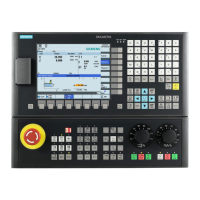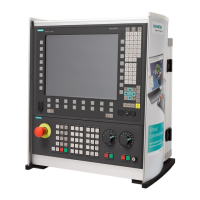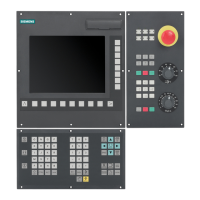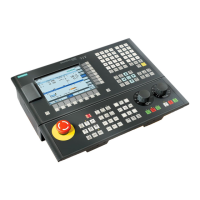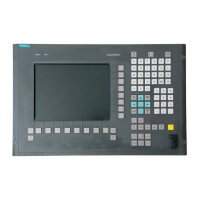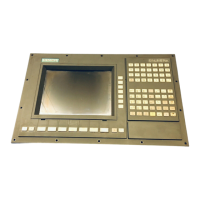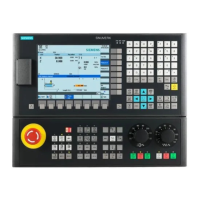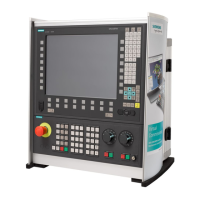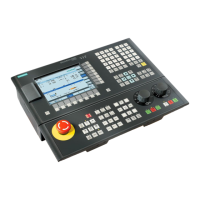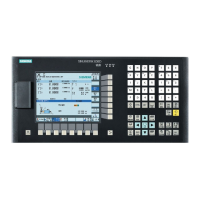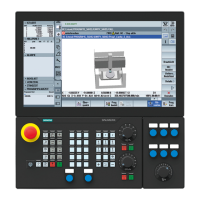T1: Indexing axes
15.3 Parameterization of indexing axes
Extended Functions
Function Manual, 03/2013, 6FC5397-1BP40-3BA1
775
15.2.3 Traversing of indexing axes by PLC
Indexing axes can also be traversed from the PLC user program.
There are various methods:
● Concurrent positioning axes
The indexing position to be approached can be specified by the PLC (see Section "P2:
Positionin
g axes (Page 599)").
● A
synchronous subprograms (ASUBs)
References:
Function Manual, Basic Functions; Mode Group, Channel, Program Operation,
Reset Response (K1)
15.3 Parameterization of indexing axes
Definition of the indexing axis
An axis (linear or rotary axis) can be defined as indexing axis with the axial machine data:
MD30500 $MA_INDEX_AX_ASSIGN_POS_TAB
Value Meaning
0 The axis is not declared as an indexing axis.
1 The axis is an indexing axis. The associated indexing positions are stored in the indexing
positions table 1.
2 The axis is an indexing axis. The associated indexing positions are stored in the indexing
positions table 2.
Indexing position tables
The axis positions (in mm or degrees) assigned to the indexes must be stored for each
indexing axis in the form of a table in machine data.
2 indexing position tables are possible:
MD10910 $MN_INDEX_AX_POS_TAB_1 [n] (indexing position table 1)
MD10930 $MN_INDEX_AX_POS_TAB_2 [n] (indexing position table 2)
Note
Several axes can be assigned to an indexing position table. On condition that these indexing
axes are of the same type (linear axis, rotary axis, modulo 360° function).
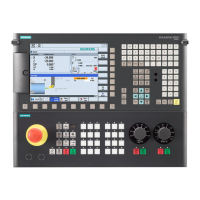
